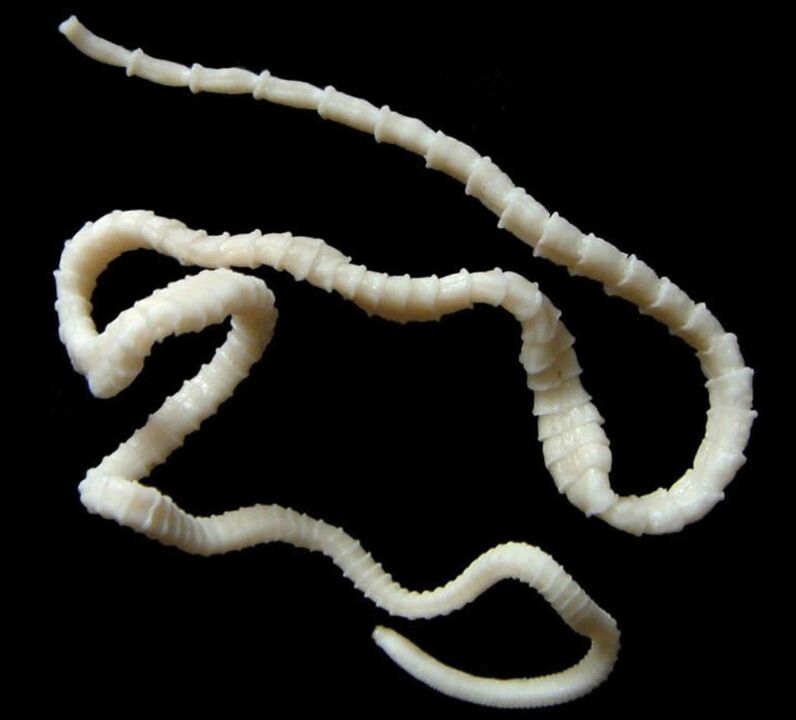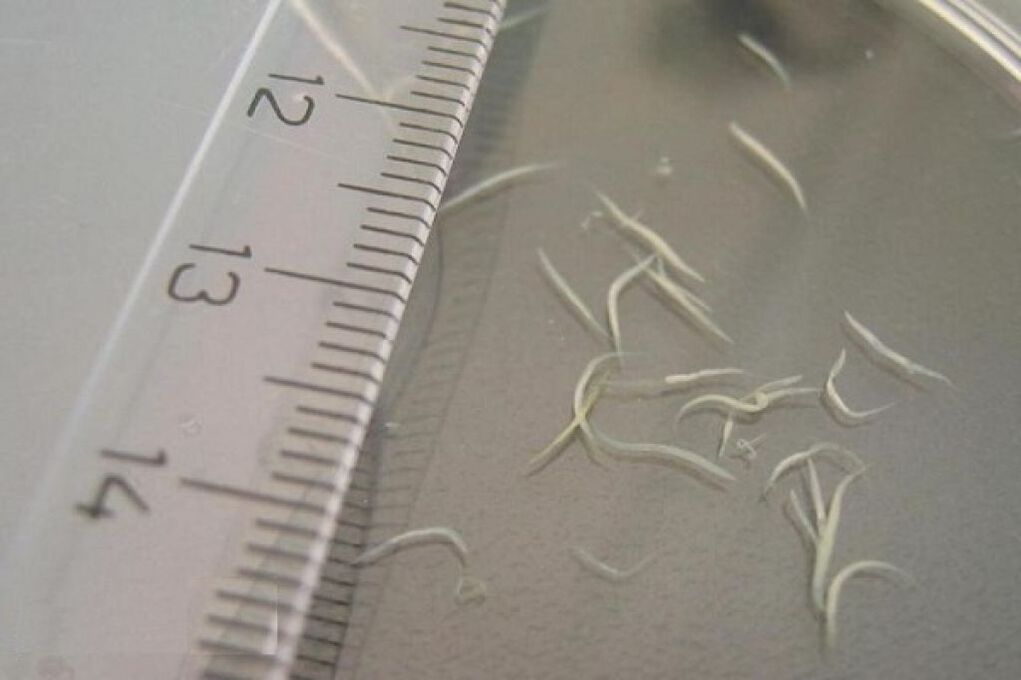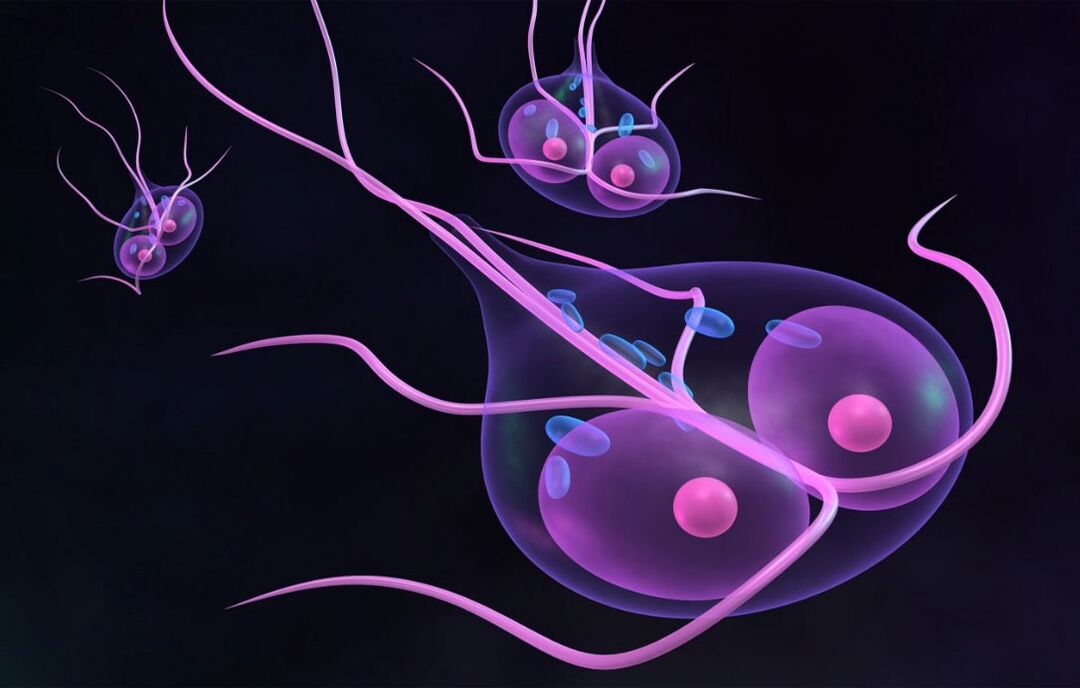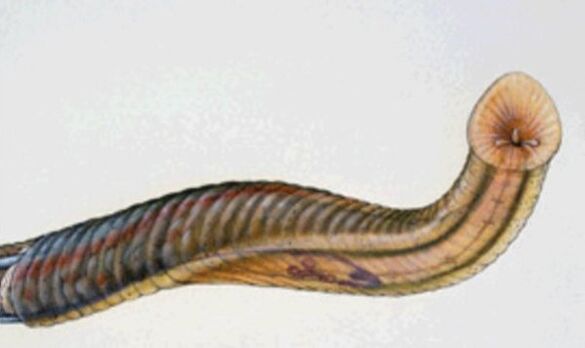Human intestines or other worms are an invasion that affects the entire body. This disease is caused by the infection of worm eggs and larvae and is characterized by many specific symptoms.
The diagnosis is made through several tests, including stool and blood. Worms in the abdomen and other organs occur in adults and children, and may appear in the anus, feces, or not manifest in any way.
reason
Worms in the intestines are mainly transmitted through the fecal-oral route, that is, they infect the eggs of the parasites or the larvae of the worms. An unpleasant feature of this invasion is that certain types of worms in children and adults can still survive for a long time outside the host (for example, in water, in soil).
The parasite eggs laid there by adults can still be infected for several months. This feature makes certain types of worms very common in children and adults.
The main routes of infection are as follows:
- Infection by using untreated water, which may come from wells, natural reservoirs, or even water taps. Almost all intestinal parasites in the human body can survive and reproduce for a long time in water, so it is best to drink bottled water. In areas with unfavorable sanitary conditions, the water in the well must be boiled for a long time before it can be used;
- Worms on the baby’s buttocks may be due to poorly washed vegetables. If manure is used to fertilize soil infected by worms, their larvae, eggs, and adults will appear and survive in the soil for a long time. The eggs fall on the vegetables with the soil particles. If this vegetable is not washed clean, it will enter the host's body and cause the human body to invade by worms;
- After eating contaminated meat, fish, or poultry, you may experience bloating and other symptoms of infection. If an animal, bird, or fish is infected with a worm during its lifetime, then its meat is likely to be infected too, and the parasite (such as fish) can easily take root in the human body. Only by carefully and prolonged heat treatment of the meat (boiling or frying at the highest temperature) can they be removed. You can also defeat the invasion by freezing. But since the maximum temperature of most modern household freezers is about 8 degrees, it is necessary to put meat, fish or poultry there for at least a week;
- Signs of human infection with worms may appear after contact with pets. Dogs and cats walking on the street almost always have worms in their stomachs (domestic cats are not usually infected). When performing sanitation procedures, the animal will spread worm eggs from the anus to the entire coat. If you kiss such an animal or do not wash your hands after touching it, worms will breed in the human body, because the animal invasion takes root in the human body;
- Even after swimming in an infected pond, a person can notice signs of bloating and the presence of other worms. This is a fairly rare method, but it may be infected;
- Human helminthiasis spreads from one person to another through surfaces, towels, and linens. Eggs and larvae move from the skin of an infected person to a surface or tissue, and from there to the skin of a healthy person upon contact. Afterwards, they may be brought into the mouth of a healthy person and infection may occur.
It is worth remembering that many types of intestinal parasites are common in children. This is because many children are not very concerned about hygiene. Many surfaces of the kindergarten are covered with worm eggs, as shown in the picture below, even though only one child is sick at first.
For this reason, the first task for parents is to explain to the baby that all types of worms in the human body are dangerous and can persist on the skin of the hands and enter the mouth from this. Therefore, good hygiene is very important. A video about the spread of worms in women, men and children and their developmental characteristics is posted at the end of the material.
Variety
Some patients are interested in what color the worms are and how to visually determine what they are in the stool? In most cases, these are white or light worms, but sometimes transparent worms are also found in humans. They are flat or round, and sometimes they have two dark food passages on their sides.
- The largest human worms are called tapeworms. The largest in this group is the bovine tapeworm. According to scientific research, they can survive in the intestines for up to 40 years and can grow up to several meters in length.
- Roundworms are the most common kind of pests, belonging to roundworm nematodes. Would such a person be big? Females reach a length of about 25 cm, males-12 cm;
- Pinworms are more common in children than in adults. These are small individuals, similar to the description of roundworms, but smaller. The largest pinworm can only grow to 10-12 cm;
- Giardia is the smallest type of parasite. This is very common. If you find it in the stool, you need to consider how to deal with the worm and start choosing a treatment method;
- Invasion of trichinosis is characterized by the most severe course, fever and facial edema. This invasion is called the invasion caused by Trichinella spiralis.





The most common individual types have common characteristics and are visible in feces. Therefore, the feces of a person infected with worms can be distinguished from the feces of an uninfected person.
localization
Some people who suspect they have invaded are interested in where the worm is located in the body? Although it is traditionally believed that worms exist in the human intestines, this is not entirely true.
Almost all kinds of worms in humans can develop in many organs and systems. This is related to the particularity of their migration. When the larvae hatched from the eggs in the intestine enter the blood and spread with the blood to the whole body.
They enter the human body through the mouth, but their manifestations can occur in the following places:
- Subcutaneous parasites are not very common tropical parasites carried by insects (tsetse flies, specific tropical mites, etc. ). Subcutaneous parasites are almost never found in the middle lane, but there is a risk of infecting them during the tour. These parasites are only under the skin during the initial stage of their life cycle, after which they can move to the muscles;
- The common locations observed in women are vagina and uterus. They can crawl there from the anus or infect the reproductive system during migration;
- Since the larvae often infect the ear, nose and throat organs (including the throat), worms may also be found in the ears of babies or adults;
- Many worms choose the digestive system and intestines as their location. There they have enough nutrients (blood and serum) and oxygen to maintain a normal life. Treating intestinal parasites is usually easier than other methods. But even if they are in a person's stomach at first, they can infect other organs over time;
- The signs of lung worms may be confused with the characteristic symptoms of pleurisy or pneumonia. However, this is a common location for worms to locate, so it is important to diagnose their presence in time;
- If the parasite enters the brain, the nervous system will be damaged. It can manifest as convulsions, irritability, unreasonable anxiety, etc. ;
- If worms in the human body appear in the heart, tachycardia and rhythm disturbance may occur. In particularly severe cases, heart failure may occur;
- In the liver, worms are also very common because they enter the liver mainly from the intestine through the portal vein.
In summary, for patients where worms live in humans, it is necessary to consider not only the type of invasion, but also the stage of infection.
complication
It is important to know what the worm can cause and what will happen if it is not treated? Worms can cause systemic poisoning, which can be very obvious.
Allergic symptoms can also occur because the immune system produces histamine to defend against foreign invasions. In this case, you need to remember what allergic rashes caused by worms look like-these are medium-sized pink spots, sometimes with hives, and usually without itching.
As with liver positioning, when located in other organs, human tapeworms or other parasites can cause damage to the mucous membranes and local inflammatory processes in small areas.
As a result, abscesses may occur (in the case of the liver, if left untreated, pus will leak into the abdominal cavity and cause blood poisoning).
As with bronchial and lung injuries, coughing often occurs. Then bronchitis, pleurisy or pneumonia develop and must be treated with antibiotics, although this is a response to invasion.
With the positioning of the parasite in the vagina, chronic diseases and deterioration of the microbiota may occur. It is believed that this phenomenon can lead to infertility.
symptom
The symptoms of human worms are diverse, but they are characteristic of almost all types of parasites. However, chronic and acute infections may have different symptoms in adults. In acute infection, the following symptoms of the disease are characteristic:
- Under normal circumstances the temperature rises (up to 38 degrees);
- Chills and skin symptoms (rash) similar to fever;
- When the larvae are located in the lungs or bronchi, the systemic symptoms are coughing;
- The inflammatory process is a sign of the presence of worms in the human body, therefore, lymph nodes will increase;
- Worms and individual allergies are related, therefore, signs of worms in the human body in the form of rashes and allergic reactions are possible.
But in most cases, the symptom of the presence of worms in humans is the intestine, because the parasites are most commonly located in the intestine. These are the symptoms of an individual infected with a worm, such as:
- Stool disorders-constipation or diarrhea, sometimes bloody;
- The initial symptoms of worms are loss of appetite, nausea, and aversion to certain types of food, which eventually lead to weight loss;
- The first signs of adult worms may also be flatulence and bloating;
- Over time, pain in the abdomen and stomach will appear, regardless of food intake, intermittent or continuous;
- For worms, a person will experience general symptoms of poisoning-pale, lethargy, chronic fatigue, etc.
Skin parasites can cause specific symptoms in adults and children. Signs of worms are numbness of the limbs, skin tingling, headache, dizziness, and rarely-fever. In any case, the incubation period of worms in humans is quite long, which may take several weeks to several months.
Therefore, the first signs of worms in the human body may not appear soon. And since almost all symptoms of worms may indicate other diseases, usually if a person has worms, this will only become obvious when they enter the stool.
diagnosis
Even if you know how worms appear, you may not notice their appearance. Certain types of worms do not appear for a long time, and it is impossible to diagnose human worms at home. In the laboratory, the following methods are used to help determine the presence of worms. This article discusses the symptoms and treatments of worms:
- General blood analysis. The worm may be in a situation where it is biased. It looks like a severe anemia-iron and hemoglobin levels have dropped significantly. It occurs because the worms in the human body can cause local bleeding and continue to destroy the mucous membrane, and they are also parasites that directly feed on blood;
- If the worms are in the intestine, their waste will be in the stool. What signs of worms can be seen in the feces of the individual? They are the eggs, larvae, and even adults of parasites. However, if you know what a worm looks like on a human, the adult worm in the feces can be independently identified;
- No matter where the worm comes from and what kind of human worm (protozoa, roundworm, tapeworm), antibodies against them will appear in the blood. This is because once a person is infected with worms, the immune system treats them as foreign invaders and tries to resist it by producing antibodies. This method helps determine what types of worms are present and the symptoms that should be expected, because each invasion produces different antibodies.
The latter method of diagnosis is particularly good because it allows you to learn about worms at an early stage, identify the types of worms, and understand how to treat human worms.
treatment
Some patients who are interested in what human worms look like and how they enter the body also want to know how to cure them in individuals. The official medication regimen for adult worms includes a single dose of anthelmintic. When a person suffers from worms, the drug acts on the entire body.
It is also necessary to repeat the course of treatment for adults 2-3 weeks after the first use of the drug. It is necessary to poison both small and large infections twice to get rid of the larvae completely.
If the worm is in children, other treatments are recommended. Because these drugs are toxic, adult treatment can negatively affect the liver. For children, the prescribed drugs can be taken in a short period of time (multiple times) to reduce the burden on the liver.
Some people who want to know how to treat worms in individuals have chosen the folk struggle method, which is to eliminate worms in adults or children through natural means.
It is believed that if you consume one tablespoon a day, mixing pumpkin seeds and honey in a one-to-one ratio can effectively fight worms.
Use enema from garlic milk solution for effective treatment. You can also treat intestinal worms by drinking a similar solution. If there are worms in the human body, the symptoms will begin to diminish after a week.
prevention
Knowing the source of worms and pinworms, you can determine a list of rules that should be followed to protect yourself from human worms. In order not to ask the "Do I have a worm" question, it is worth doing the following:
- Wash vegetables and fruits thoroughly;
- Cook or fry the meat thoroughly, or it can be frozen for a long time;
- Use only bottled water or purified water for drinking;
- Limit contact with pets and regularly prevent worm infections;
- Wash your hands often, especially after in public places.
If infection is suspected, it is recommended to regularly check the stool for the presence of worms.



























